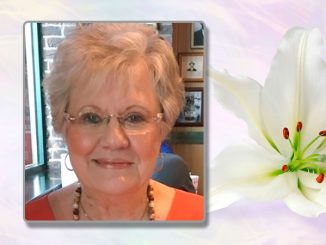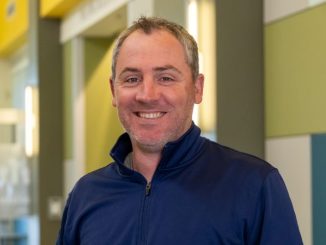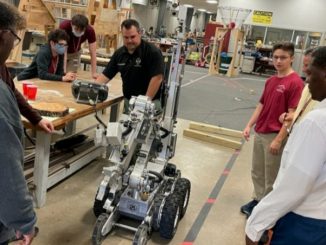
When the evolution curriculum pilot study begins in January, Hahnville High School teacher Cecelia Gillam-Brown will be among 19 teachers in the United States conducting it. Being chosen for it came as a surprise to Gillam-Brown, who thought teachers closer in proximity to the University of Utah’s Genetic Science Learning Center would be chosen.
Instead, they were named throughout the nation and she couldn’t believe they accepted her application.
“They’re trying to find the best way to teach evolution so it’s real world relevant from the standpoint of using evidence to show that it occurs,” Gillam-Brown said. “Hahnville will be part of helping other schools around the U.S. to help implement evolution so it’s real-world relevant … so students understand it.”
The curriculum was developed around the Next Generation Science Standards with Common Core educational standards, and aimed at ensuring “everything aligns with that to help children make better decisions based on evidence,” she said.
Louisiana has not entirely adopted Next Generation Science Standards, although the St. Charles Parish School District does work on them.
The six-week pilot study begins in January at the HHS, which is when evolution is normally taught at the school. The teachers must report weekly on how the curriculum worked with the students.
Gillam-Brown completed a week of training in anticipation of the study.
“We were like the students … doing everything a student would do to make sure we could effectively incorporate it in our classrooms,” she said. “I thought that was very interesting. They were very knowledgeable, helpful and friendly. It gave me the confidence so that when I start teaching it I can teach it effectively.”
Gillam-Brown has been with the parish school system since 2005, teaching physical science and biology.
“I have always loved science since I was in elementary school,” she said. “I fell in love with cells.”
From there, she decided to major in education and science.
“I think this is an excellent opportunity to teach this from another perspective,” said Gillam-Brown of the pilot study. “It’s almost like bringing a textbook to life.”
The curriculum is more interactive and hands-on, as well as encompasses all learning styles, she said.
“It feels really good to be in this position to open them up on this subject,” she said. “People say things, but they can’t necessarily back it up.”
For example, students will be challenged in critical thinking by looking at actual research and deciding if they agree or disagree with the points, she said. They must defend their position by backing their argument.
“I would have never thought to approach it in this manner,” Gillam-Brown said. “I just can’t wait to see if they have the same enthusiasm … I think they will.”




Be the first to comment